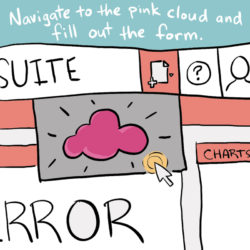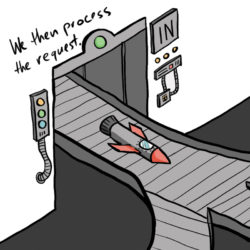Understanding NetSuite inventory management has never been this easy!
If you’re like most business owners, you know that effective inventory management is key to your success. But what does that mean? And how can you make sure your inventory is working for you – not against you? This comprehensive guide will show you how to get your inventory under control and performing at its best. Read on for tips and tricks on everything from stocking the right number of products to tracking stock levels and making changes in real time. Also, With NetSuite inventory management you’ll be able to keep your inventory moving while maintaining a healthy profit margin – no sweat!
What Is Inventory Management?
Inventory management is all about keeping track of the items in your stock, from raw materials to finished products. It includes everything from ordering and receiving new goods to tracking how much inventory you have on hand and where it’s located.
Why do Businesses Need Inventory Management?
Good inventory management is critical to the success of any business that holds inventory. It is important to track and manage inventory levels so that businesses know what products they have on hand, where those products are located, and how much of each product they need to keep in stock. By keeping a close eye on inventory levels, businesses can also avoid overstocking, which can tie up valuable cash flow in unnecessary inventory. In short, inventory management is important because it helps businesses maximize sales, minimize costs, and keep customers happy.
Methods to Effectively Manage Your Inventory
If you want to be a successful retailer, you need to know how to effectively manage your inventory. That means having a system in place to track what you have in stock, what needs to be reordered, and what’s selling well. Here are methods of inventory management:
FIFO
The first-in, first-out method is one of the most commonly used inventory management techniques. This system assumes that the first items to arrive in your stock are the first ones to be sold. FIFO can help manage perishable goods or seasonal items. For example, if you run a bakery and receive a shipment of flour every Monday, the flour that arrived in this week’s shipment would be used before the flour from last week’s shipment. This ensures that your bakery is using the freshest ingredients possible, which provides the best taste for your customers. The first-in, first-out method can also help to prevent waste, as older items are used before, they have a chance to expire. Overall, the FIFO system is a simple and effective way to manage inventory and ensure that your business is running smoothly.
LIFO
The last-in, first-out method is the opposite of FIFO. In this system, the assumption is made that the last items to arrive in your stock are the first ones to be sold. LIFO can help manage inventory for businesses that sell fast-moving goods or seasonal items. For example, if you run a clothing store and receive a shipment of sweaters every Monday, the sweaters that arrived in this week’s shipment would be put on the shelves first, while the sweaters from last week’s shipment would be put on the shelves last. This ensures that your customers are seeing the newest items in your store, which can help to boost sales. The LIFO system can also help to prevent waste, as older items are used before they have a chance to expire. Overall, the LIFO system is a simple and effective way to manage inventory and ensure that your business is running smoothly.
ABC Analysis
The ABC analysis is a method of inventory management that categorizes inventory based on its importance. In this system, inventory is divided into three categories:
- A items are the most important items in your inventory, and they represent the items that generate the most revenue for your business.
- B items are less important than A items, but they still generate significant revenue for your business.
- C items are the least important items in your inventory, and they generate the least amount of revenue for your business.
The ABC analysis can help manage inventory because it allows businesses to focus on the items that are most important to their bottom line. This system can also help businesses to save money by reducing the amount of inventory they need to keep on hand. Overall, the ABC analysis is a simple and effective way to manage inventory and ensure that your business is running smoothly.
Just-In-Time
The just-in-time method is a type of inventory management that seeks to minimize the amount of inventory on hand by only ordering goods as they are needed. This system can help reduce costs and maximize efficiency. Just-in-time inventory management can be difficult to implement, but it can be very beneficial for businesses that can do so. The main advantage of just-in-time inventory management is that it can help businesses to save money by reducing the amount of inventory that needs to be stored. In addition, just-in-time inventory management can also help businesses to maximize their efficiency by ensuring that they always have the necessary materials on hand without having too much surplus. While just-in-time inventory management can be difficult to implement, businesses that can do so can reap significant rewards.
Best Ways to Improve Inventory Management
Any business owner will tell you that managing inventory is a challenging but critical task. After all, if you don’t have the right products in stock, you’ll miss out on sales opportunities. But if you have too much inventory, you’ll tie up valuable resources that could be used elsewhere. So how can you strike the right balance? Here are some of the best practices:
Use Unified Inventory Management System
A unified inventory management system is a software solution (like NetSuite) that helps businesses to track and manage their inventory. This type of system can help improve inventory management because it provides businesses with a centralized place to track all of their inventory data. In addition, unified inventory management systems often come with features that can help businesses to improve their overall efficiency. For example, some unified inventory management systems come with barcoding features that can help businesses to streamline their picking and packing processes. Overall, a unified inventory management system can be a valuable tool for businesses that want to improve their inventory management.
Keep an Eye on Your Old Goods
One of the best ways to improve inventory management is to keep an eye on your old goods. As items get older, they become less valuable and more likely to expire. As a result, it’s important to continuously monitor your inventory and remove old items as necessary. This can be a challenge, but it’s important to stay on top of it to avoid having too much dead inventory.
Monitor Your Inventory Levels Closely
This means keeping track of how much inventory you have on hand and how quickly it’s selling. Doing so can help you to avoid stockouts and overstocks. Additionally, it can help you to make more informed decisions about your inventory levels. For example, if you know that you typically sell through your inventory within two weeks, you can order new goods accordingly.
Communicate With Your Suppliers
To keep your inventory levels in check, it’s important to communicate with your suppliers. This way, you can ensure that you’re always getting the goods you need when you need them. Furthermore, it’s important to build strong relationships with your suppliers so that you can negotiate better terms and get discounts when possible.
Major Mistakes in Your Inventory Management
While there are many things you can do to improve your inventory management, there are also some major mistakes that you’ll want to avoid. Here are some of the biggest mistakes you can make:
Not Ordering Enough Goods
Another common mistake that businesses make in terms of inventory management is not ordering enough goods. This can lead to many problems, including lost sales opportunities and stockouts. To avoid these problems, it’s important to always have a good sense of how much inventory you need and order accordingly.
Ordering Too Many Goods
On the other hand, businesses can also order too many goods, which can lead to overstocks and wasted resources. To avoid this problem, it’s important to keep an eye on your sales data and order accordingly.
Failing to Communicate with Suppliers
Another mistake that businesses make is failing to communicate with their suppliers. This can lead to several problems, including stockouts and late deliveries. To avoid these problems, it’s important to build strong relationships with your suppliers and always communicate your needs.
Not Tracking Your Inventory Levels
Not tracking your inventory levels can have some serious consequences. For one thing, it will be very difficult to manage them effectively. As a result, you may end up with stockouts or overstocks. Additionally, you won’t be able to make informed decisions about your inventory levels. This can lead to inefficiencies and higher costs. In the worst case, it can even jeopardize the success of your business. So, if you’re not already doing so, start tracking your inventory levels today. It’s essential for effective management and decision-making.
Seasonality Problems
Many businesses experience fluctuations in demand due to seasonality. This can be a challenge for inventory management because you need to have the right amount of inventory on hand at all times. If you don’t, you may end up with stockouts or overstocks. As a result, it’s important to take seasonality into account when planning your inventory levels. This way, you can be sure to have the right amount of inventory on hand when demand is high. Seasonal demand can vary quite a bit from year to year, so it’s important to keep an eye on trends and adjust your inventory levels accordingly. By doing so, you can avoid the costly consequences of stockouts and overstocks.
Types of Inventory Losses
Inventory loss is often seen as an inevitable cost of doing business. But with the right systems and processes in place, businesses can do a lot to reduce the amount of inventory they lose each year. Here are some main types of inventory losses;
Employee Theft
Employee theft is one of the most common types of inventory losses. This can take many different forms, such as taking inventory home without permission or selling inventory on the side. Theft can also occur when employees fail to properly document inventory levels or when they damage inventory.
While it is impossible to eliminate employee theft, several steps can be taken to minimize its occurrence. One way to deter employees from stealing is to conduct regular audits of inventory levels and require employees to sign out inventory when it is removed from the premises. Another way to reduce theft is to offer incentives for employees who report instances of theft or help prevent it from happening. By taking these measures, businesses can help to reduce the amount of inventory loss due to employee theft.
Customer Theft
Customer theft is another common type of inventory loss. This can happen in many ways, such as shoplifting or return fraud. While it is not possible to eliminate customer theft, there are many steps that businesses can take to minimize its occurrence. One way to deter customers from stealing is to have a clear and visible security presence in your store. This can help to deter potential thieves and make it more likely that they will be caught if they do try to steal. Another way to reduce customer theft is to implement security measures such as CCTV cameras and alarms. By taking these measures, businesses can help to reduce the amount of inventory loss due to customer theft.
Breaking and Expiration of Goods
Another common type of inventory loss is breakage or expiration of goods. Reasons are damaged packaging or products that have reached their expiration date. While it is not possible to eliminate this type of inventory loss, businesses can take steps to minimize it. One way to reduce breakage and expiration is to carefully track inventory levels and remove damaged or expired goods from the premises as soon as possible. Another way to reduce this type of loss is to implement quality control measures such as regular inspections of products. By taking these measures, businesses can help to reduce the amount of inventory loss due to breakage and expiration.
Incorrect Inventory Counts
One of the most common causes of inventory loss is incorrect inventory counts. This can happen for a number of reasons, such as human error or problems with the inventory management system. Incorrect inventory counts can lead to stockouts or overstocks, which can be costly for businesses. To avoid this type of loss, it is important to regularly audit inventory levels and to have a robust inventory management system in place.
How NetSuite Inventory Management Can Help Your Business?
NetSuite inventory management system provides many benefits for businesses, including the ability to reduce inventory on hand, optimize inventory levels, ensure product availability, and keep inventory costs low. Here are some benefits of using NetSuite for inventory management;
Reduce Inventory on Hand
One of the main benefits of NetSuite inventory management system is that it allows businesses to reduce the amount of inventory they have on hand. This is because NetSuite gives businesses a single, real-time view of inventory across all locations and sales channels. This means that businesses can make more informed decisions about what inventory to keep on hand and what can be safely sold or shipped from other locations. As a result, businesses can free up cash that would otherwise be tied up in excess inventory.
Optimize Inventory Levels
Another benefit of NetSuite inventory management system is that it helps businesses optimize their inventory levels. By giving businesses a single, real-time view of inventory across all locations and sales channels, NetSuite helps businesses avoid stockouts and overages. This is because businesses can see exactly how much inventory they have on hand at all times and can make adjustments accordingly. As a result, businesses can avoid costly stockouts and maximize their sales potential.
Ensure Product Availability
In addition to reducing inventory levels and avoiding stockouts, NetSuite inventory management system also helps businesses ensure product availability. This is because NetSuite gives businesses a complete view of their supply chain, from raw materials to finished products. As a result, businesses can plan production more effectively and ensure that products are available when customers need them.
Keep Inventory Costs Low
Finally, NetSuite inventory management system helps businesses keep their inventory costs low. This is because NetSuite includes features such as lot tracking and expiration date tracking. These features help businesses keep track of their inventory so that they only purchase what they need when they need it. As a result, businesses can avoid waste and save money on their inventory costs.
Overall, NetSuite’s Inventory Management System provides many benefits for businesses that can help them save money, avoid stockouts, and ensure product availability. If you’re looking for ways to improve your business’s bottom line, consider implementing NetSuite’s Inventory Management System today.
Conclusion:
Inventory management is a critical part of any business, and there are many ways to manage it effectively. By auditing inventory levels, implementing a robust inventory management system, and keeping track of inventory, businesses can avoid costly mistakes and ensure that their products are available when customers need them. NetSuite’s Inventory Management System provides many benefits for businesses that can help them save money, avoid stockouts, and ensure product availability.
If you’re looking for an effective and comprehensive way to manage your Netsuite inventory, contact OdeCloud NetSuite professionals. Our team of experts can provide you with a custom solution that takes into account your specific needs. We’ll work with you to create a system that is efficient and easy to use, so you can focus on your business goals. Contact us today to learn more about our inventory management services.










